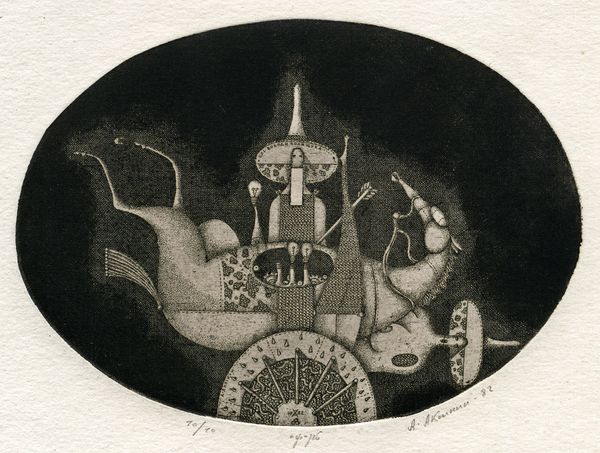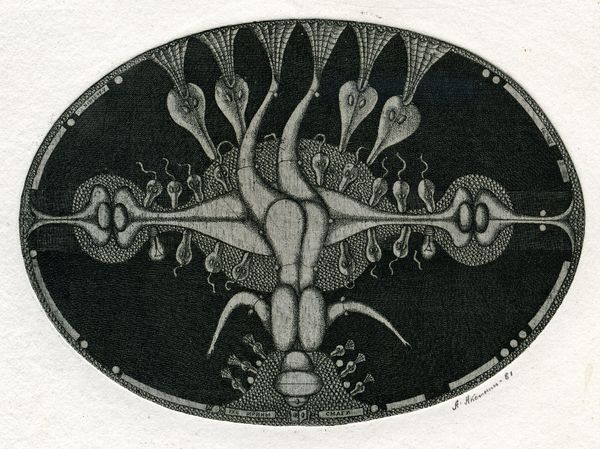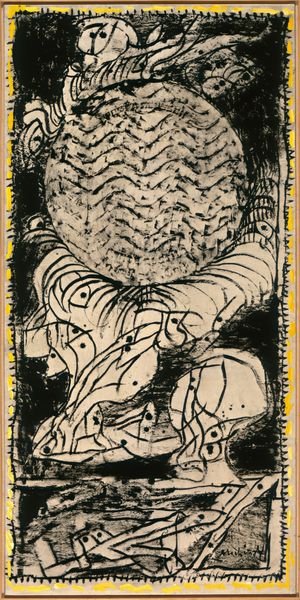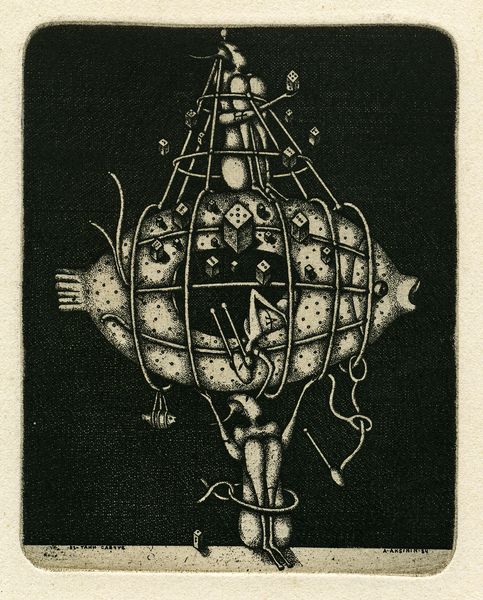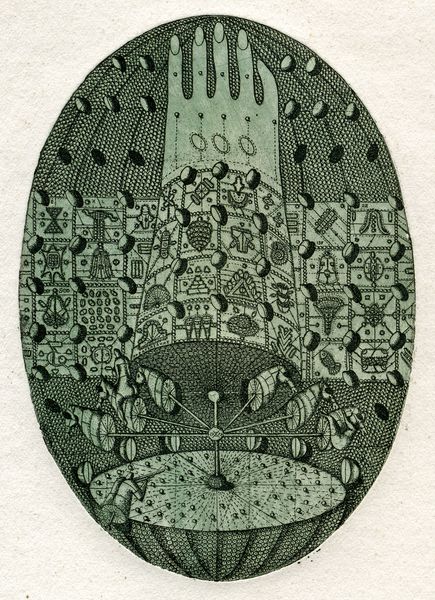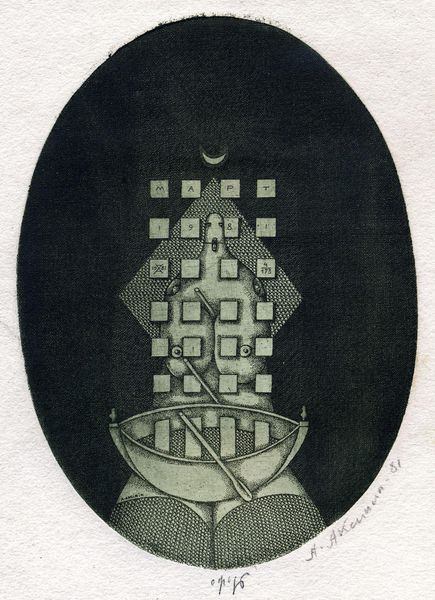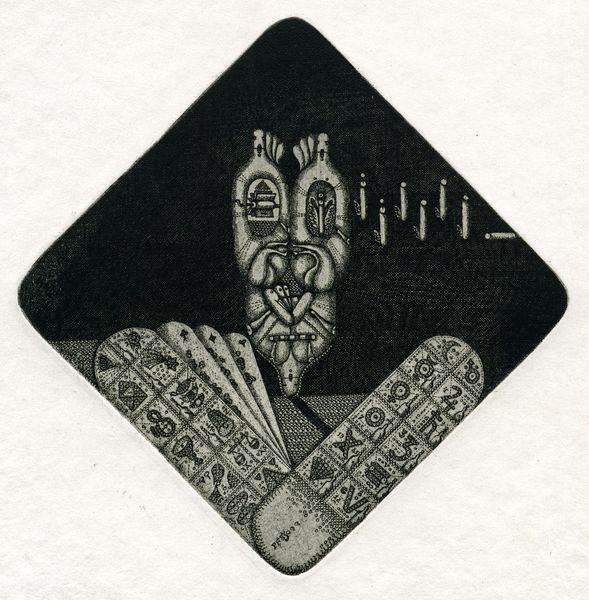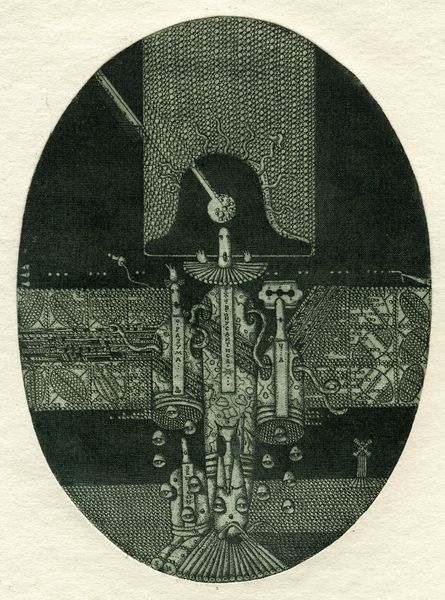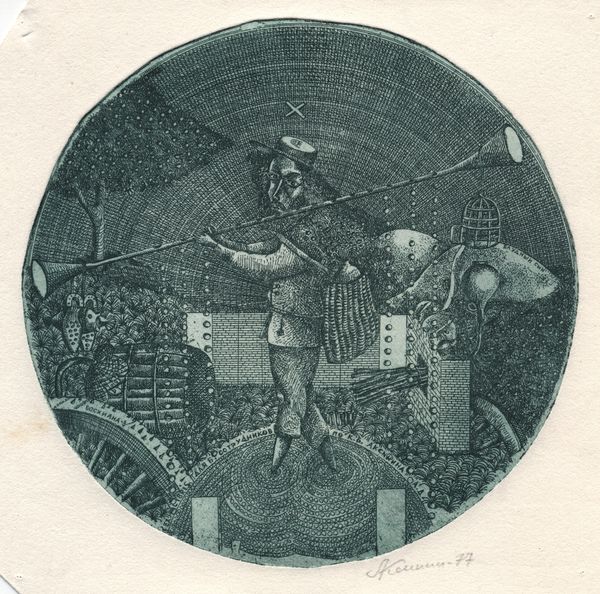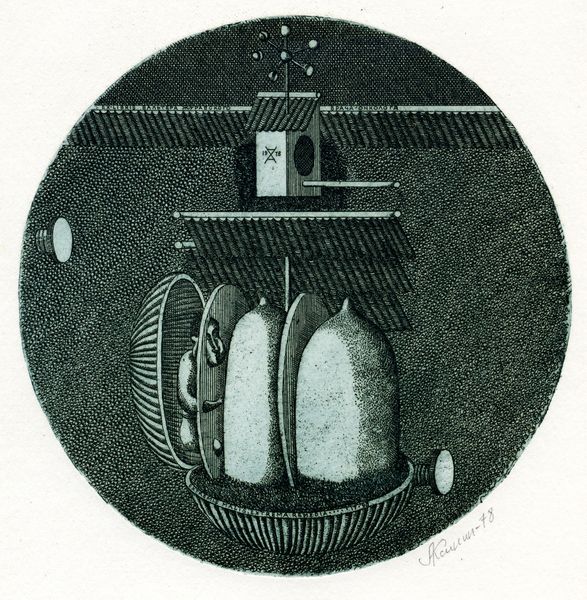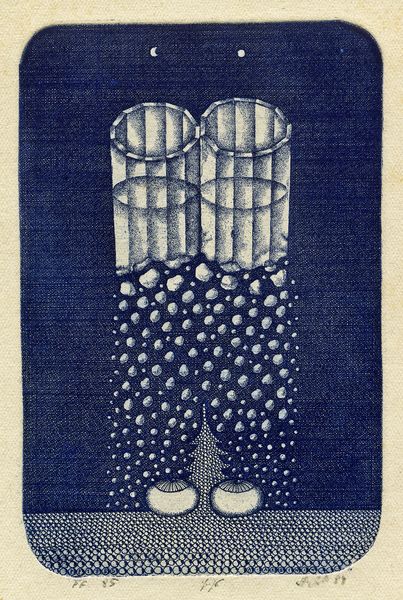
#
quirky illustration
#
old engraving style
#
unrealistic statue
#
illustrative and welcoming imagery
#
limited contrast and shading
#
cartoon style
#
cartoon carciture
#
cartoon theme
#
pencil art
#
doodle art
Copyright: Oleksandr Aksinin,Fair Use
Editor: This quirky little print, "Exlibris G. J. Rhebergen" by Oleksandr Aksinin from 1982, looks like an etching or engraving, judging from the fine lines. There's an almost cartoonish character at the center, but also a lot of meticulous detail. What strikes you about this work? Curator: Well, immediately I’m drawn to the materiality of its production. Look at the labor involved in creating this image—all those tiny etched lines! Consider how the artist, Aksinin, is engaging with the historical process of printmaking. The act of creating an "exlibris," or bookplate, speaks to the relationship between art, craft, and personal property. It's not just decoration; it's a marker of ownership, of consumption, even. Editor: So you're saying the value lies not just in what it depicts, but in how it was made and what purpose it served? Curator: Precisely! The means of production and the social context are crucial. The intricate detail suggests a level of artisanal skill, a deliberate crafting that elevates this functional object – the bookplate - beyond mere utility. Think about who G.J. Rhebergen was. Were they a patron of the arts? A fellow artisan? The value embedded within this piece stems not only from the artistry but also from the tangible connections to labour and ownership. Consider what materials and tools are involved: acid, metal plate, printing press, paper… It is so interesting! What do you think of its distribution? Was it limited or intended for a wider distribution of friends and acquaintances of G. J. Rhebergen? Editor: That gives me a totally new perspective! I was focusing on the image itself, but I see now that the materials and the process tell a much bigger story. Curator: And that's the beauty of a materialist approach – it grounds the artwork in its physical reality and its relationship to the social world. Editor: Thanks, that makes me look at it in an entirely new way!
Comments
No comments
Be the first to comment and join the conversation on the ultimate creative platform.
